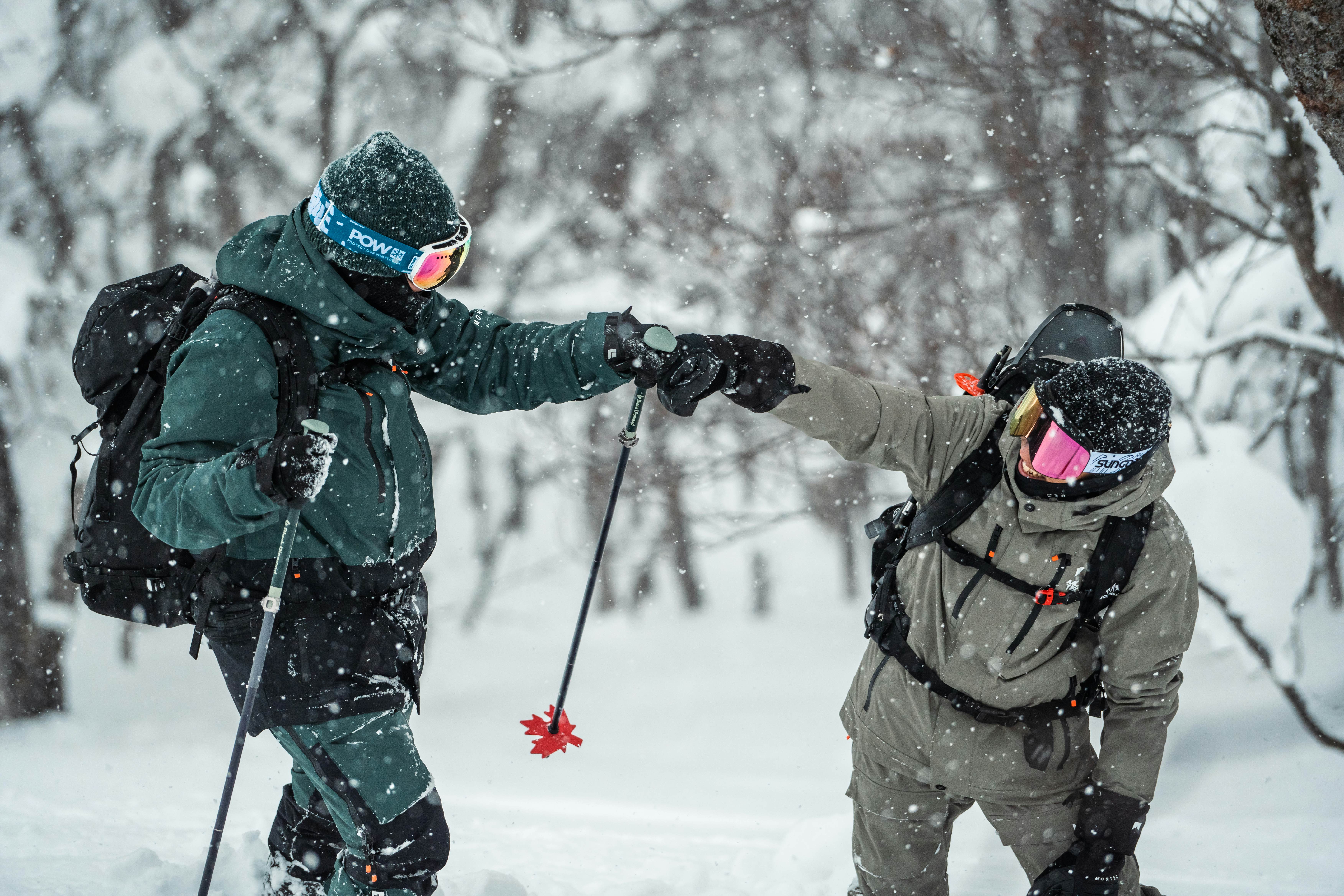As any seasoned backcountry rider knows, choosing the right touring partner for your off-piste adventures is often overlooked - yet it’s one of the most crucial decisions you’ll make. The phrase “no friends on a powder day” falls apart beyond resort boundaries, where trust and cooperation can mean the difference between a great day and a downright dangerous one. Your partners are not just companions; they hold your life in their hands.
SunGod Ambassador and seasoned freeskier Heidi Nixon shares her 5 key recommendations for committing to a tour with someone new.
1. Establish Open Communication
As in any relationship, communication is the backbone of a successful backcountry partnership. If you’re hesitant to ask your partner about their avalanche training, to tell them you need a break, or to inquire about what gear they’re packing, they might not be the right fit for you. Open, honest dialogue ensures you’re both on the same page when it comes to safety and decision-making.
2. Share Likeminded Goals
Are you envisioning a laid-back day with a quick ascent followed by charcuterie at the summit, or are you eyeing an ambitious line that involves rappelling into an untouched couloir? Whatever your objectives, it’s essential that they align with your partner’s. Once you leave the parking lot, you’re in it together, and differing expectations can lead to frustration—or worse, unsafe conditions.
3. Discuss Your Risk Tolerance
Understanding your own risk tolerance—and that of your partner—is key to choosing the right terrain for the day. Are you comfortable tackling complex routes, or do you prefer to stick to simpler, more conservative options? Establishing these boundaries ahead of time helps ensure everyone is on the same page and prevents the group from wandering into terrain that exceeds anyone’s comfort level.
4. Share the Load of Quality Gear
Quality gear is non-negotiable in the backcountry. Your essentials—beacon, shovel, probe, and the skills to use them—are your first line of defence in an emergency. Beyond that, you need the right layers, helmet, high quality ski goggles and sunglasses, a first aid and repair kit, a communication device, food, and water, to name a few. A quick gear check in the parking lot is always smart; it ensures you know who’s carrying what and where everything is in case of an emergency.
5. Match your Fitness Levels
Complementary fitness levels are often overlooked but can be critical to the success of your tour. If one person is moving too slowly, it can create cold exposure risks, while someone moving too fast might unintentionally break up the group. Make sure everyone is comfortable with the pace, so you can stay together and avoid potential hazards. Want to boost your ski fitness? Check out our 6 fitness tips for the ski season.
The backcountry may be drawing more people in, but its risks remain constant. Take ownership of your own safety, and recognize that choosing a touring partner is an agreement to look out for each other’s lives. Regularly practice rescue skills with your group and stay committed to lifelong learning. Happy skiing!
